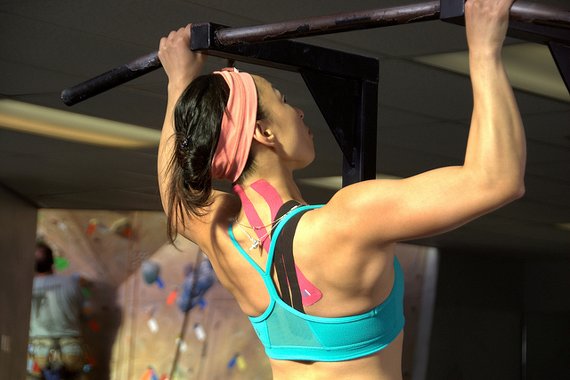Strength training, it is the mantra of climbers the world over. Hours are spent on fingerboards and pull-up bars, weighted down and locking out—all with aspirations to rock up to the crag like Nalle Hukkataival.
This obsession is universal in all sports, and like boxers or football players, climbers too need to become stronger and train in order to make gains and overcome plateaus. I meet plenty of climbers and clients who have come up with fantastic training routines to build strength, but rarely do I come across anyone who trains to build power or understands the importance of it. Unfortunately it is often misinterpreted as just another word for strength when in fact,
power = strength x speed
Training power is massively important to your overall strength and is the money maker on sit starts and dynos—not to mention the last move on that epic bloc you’ve been working. A sure fire way to train for power is by using plyometrics.
What is plyometrics training?
Plyometrics is a type of power training that involves the stretch shortening cycle, whereby the eccentric phase of a muscle contraction is immediately followed by a concentric phase.
An example of plyometrics is jumping. When performing a push-up, the body is in total control of the concentric and eccentric phase (the pushing up and lowering down). The movement is slow and contained, however, with plyometric push-ups you are able to explode with strength and speed, while allowing gravity to take over for the eccentric phase. What constitutes as a plyometric movement may surprise you. It’s not all jumping. Exercises range from throwing a ball and swinging a kettlebell, to performing a 1-5-9 on a campus board.
Related: The Ultimate Campus Board Training Guide
How to build power through plyometrics
Building power can be the answer to overcoming strength plateaus. By adding in a couple of jumping squat sessions, your quads and glutes will adapt to firing them up to beast through that squatting barrier. This works with a whole range of exercises, so utilizing plyometrics for progression and overall improvement is a no brainer.
Plyometric training is most effective when following a period of strength training. The purpose of plyometrics is to improve your capacity to exert force at speed in a particular direction. So, the greater your ability to generate maximal force, the more you can convert it into power.
The stress that muscles are put under while performing these power movements varies, so it is important to allow appropriate recovery time between sets. High impact exercises like jumping squats will require more recovery time than low impact ones, such as hopping. Plyometric training can be performed up to 3 times a week, and a generous dynamic warm-up and stretch should always precede the session.
Related: Climbing-Specific Strength Training Gym Workout
Power-building training routine
If you are hitting maximum strength while training, try this power building routine to boost your crushing potential:
1. Kettlebell swings
Swing for 30 seconds 3 times, resting for 1 minute between sets. It is a great way to get the body warm and to get you psyched.

2. Jump squats on the TRX
Aim for real height. Do 3 sets of 6 with a 1 minute rest between sets.
3. Medicine ball slams
Use your core and all of your anger to slam the ball through the floor. Perform 3 sets of 6 with a 40 second rest between sets.
4. Dynamic pull-ups
Great for building last move power, pull up with speed, releasing hands, and then catching on the way down. Do 4 sets of 4 with 1 minute rest between sets.
5. Plyometric push-ups
This can be performed on the floor or off a bench. Do 3 sets of 6 with a 1 minute rest.
Power—it could be the game changer for your climbing!









